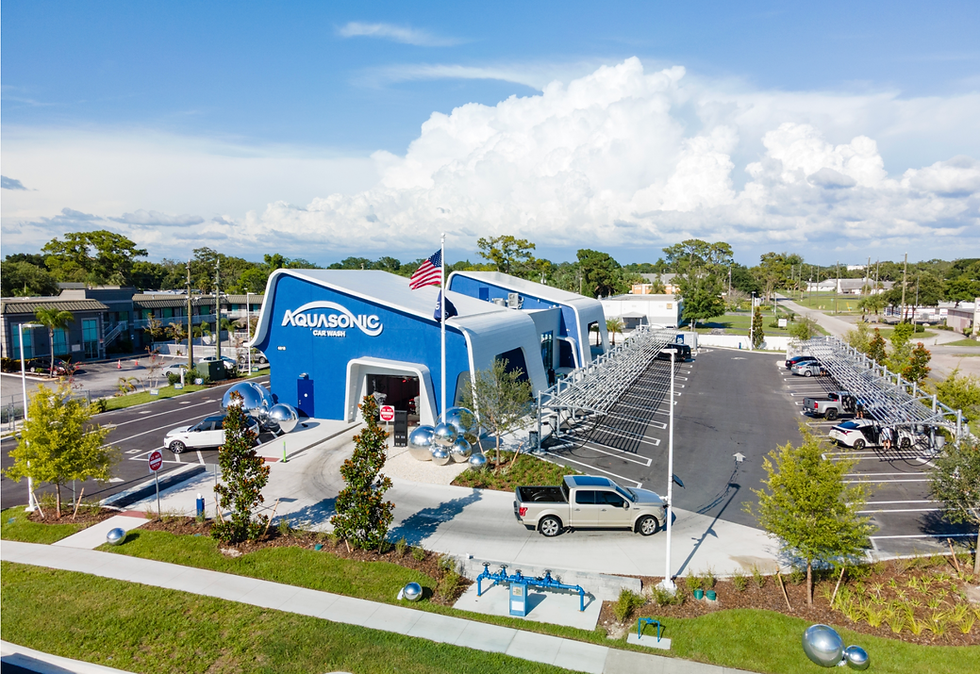RV Resorts & Glamping Sites: Why They’re a Smart Use of Your Land—and How to Craft the Optimal Plan
- Alketa

- Jun 27
- 4 min read
Updated: Jul 1
Executive Summary
In a shifting hospitality and real estate landscape, RV resorts and glamping sites are emerging as a highly strategic land use model. Demand continues to grow, driven by a desire for authentic outdoor experiences, increased mobility among travelers, and a general shift toward non-urban leisure. These asset classes combine the appeal of low upfront capital requirements with strong operating margins and scalable models, especially when paired with smart, data-backed planning and design.
This paper outlines the market rationale behind investing in RV resorts and glamping destinations, presents key factors in optimal site selection and layout, and discusses financial modeling, operational strategies, and long-term value creation.
1. Market Rationale: A New Era of Outdoor Hospitality
1.1 Behavioral Shifts and Rising Demand
The traditional lodging market is being redefined. RV travel and glamping represent a paradigm shift toward experiences that blend comfort with nature, privacy with community, and flexibility with affordability. Key drivers include:
Post-COVID Travel Trends: A pronounced shift toward domestic travel, remote work flexibility, and preference for open-air, contact-minimal environments.
Demographic Expansion: Baby Boomers (retirees with time and money), Millennials (experience-driven), and now Gen Z (digital nomads) are all engaging in outdoor lodging.
Economic Accessibility: For many, RV and glamping sites offer an affordable alternative to hotel rates, particularly in scenic and national park-adjacent locations.
1.2 Investment Appeal
Low Cost per Key: Compared to hotel development, RV and glamping units can cost 30% to 70% less per unit.
High Margin Potential: Operating expense ratios often range between 35%-55% of revenue.
Strong ADR Performance: Glamping units can rival hotel room rates, with many operators averaging $150 to $300 per night.
2. Site Selection Strategy
2.1 Geographic and Environmental Suitability
Key considerations for location selection include:
Proximity to Demand Drivers: National parks, rivers, hiking and biking trails, lakes, and regional attractions.
Accessibility: Close to highways or scenic byways, ideally within 1.5 hours of a major city or airport.
Environmental Attributes: Topography, vegetation, views, and natural buffers can all enhance guest satisfaction.
2.2 Regulatory Compliance and Zoning
Check for Hospitality/Short-Term Stay Zoning: Even rural zones may have use limitations.
Permitting Requirements: Include utility planning, ADA, fire access, water use, waste management, and health department approvals.
Environmental Assessments: Especially important in coastal, desert, and mountain regions.
3. Optimal Planning and Design
3.1 Market-Driven Segmentation
Build the layout around your market focus:
Luxury Glamping: Individual units with en suite bathrooms, decks, curated interiors.
Adventure RVers: Full-hookup pads, fire pits, access to gear storage.
Families: Large pull-through sites, pools, rec areas, safe play zones.
Events and Weddings: Group-use spaces, outdoor kitchens, marquee lawns.
3.2 Infrastructure Considerations
Roadways: Asphalt or gravel circulation loops with turning radii for RVs.
Utility Grids: Power (30/50 amp), septic systems or dump stations, water and Wi-Fi.
Bathhouses and Clubhouses: Critical for mixed-use guests.
Hardscape & Landscape: Use native plants, erosion control measures, privacy hedging.
3.3 Phasing and Density Strategy
Start with 30–50% of full buildout and test demand.
Cluster glamping units for operational efficiency.
Density Guidelines:
Luxury: 3–6 units/acre
Standard: 8–14 units/acre
Budget/seasonal: 15+ units/acre
4. Financial Feasibility Modeling
4.1 Development Costs
Component | Cost per Unit (USD) |
RV Site (Full Hookup) | $25,000 – $50,000 |
Glamping Tent | $30,000 – $60,000 |
Modular Cabin | $50,000 – $110,000 |
Bathhouse | $200 – $350 per SF |
Infrastructure | $600,000 – $1.5M total |
4.2 Revenue Forecasts
RV Sites: $45–95 ADR depending on region.
Glamping Units: $140–300 ADR.
Occupancy:
Year 1: 35% – 50%
Stabilized: 65% – 80%
Revenue Upside through amenities, F&B, guided activities, firewood and general store sales.
4.3 Ongoing Costs
Labor, marketing, maintenance, insurance, OTA commissions.
Tech platforms and guest support systems.
Property taxes, utilities (with solar offsets possible).
5. Branding and Operational Excellence
5.1 Guest Experience is the Product
From the start, define an identity:
Eco-conscious (solar-powered yurts, local materials)
Family-focused (playgrounds, movie nights, animal interactions)
Adventure-based (bike rentals, gear lockers, guided hikes)
Wellness-driven (yoga decks, healthy meals, nature immersion)
5.2 Reservations and Revenue Management
Dynamic pricing is critical. Tools like Cloudbeds or Guesty can automate seasonal rate adjustments.
Connect with Airbnb, Hipcamp, The Dyrt, and niche OTAs for exposure.
Invest in a direct booking website with SEO and social media marketing.
5.3 Staffing and Onsite Services
Hybrid model: few full-time staff, seasonal workers, remote guest communication.
Consider franchise models or third-party operators for scalability.
Offer a "concierge experience" through apps or tablets.
6. Sustainability and ESG Planning
6.1 Sustainable Construction
Use of reclaimed materials, off-grid utilities, modular builds.
Composting toilets or greywater systems in some jurisdictions.
6.2 Land Stewardship
Trail building, wildlife protection, and native planting.
Community involvement and local partnerships.
6.3 Social Equity
Provide local hiring, affordable unit nights, and community events.
Partner with outdoor equity initiatives.
7. Exit Planning and Long-Term Value
7.1 Who Buys These Properties?
Institutional buyers entering the "outdoor lodging" asset class.
National operators growing branded resort chains.
Private equity and REITs diversifying away from urban assets.
7.2 Key Exit Multiples
Stabilized NOI at 8% to 12% cap rates.
Multiples based on branding, occupancy track record, and unit diversity.
Bonus for "destination" sites near legacy national parks.
Conclusion: A Modern Lodging Frontier
RV resorts and glamping parks reflect a converging opportunity for investors, landowners, and entrepreneurs. The cost-to-entry is comparatively low. The demand metrics are rising. The operational complexity is manageable. And the customer base is growing more passionate, loyal, and experience-driven by the year.
With the right planning—guided by feasibility modeling, demographic insights, and a vision for place-making—these projects can yield substantial financial returns while providing immersive, sustainable travel experiences.
Whether on 5 acres or 50, the question is no longer "Why build a glamping or RV resort?" but rather, "How do I design one that endures, excites, and performs over time?"






Comments